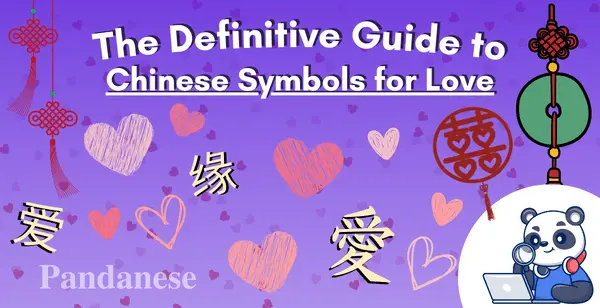
The Definitive Guide to Chinese Symbols for Love
For thousands of years, the Chinese have been using Chinese characters as Chinese symbols. These symbols are easy to comprehend and have beautiful meanings.
In China, love is frequently expressed through various Chinese characters and symbols. Some symbols are often used for other purposes like arts and crafts or home decorations.
Curious about what some of these most prominent and widely used Chinese symbols are? Continue reading to find out more!
What are the words for love in Chinese?
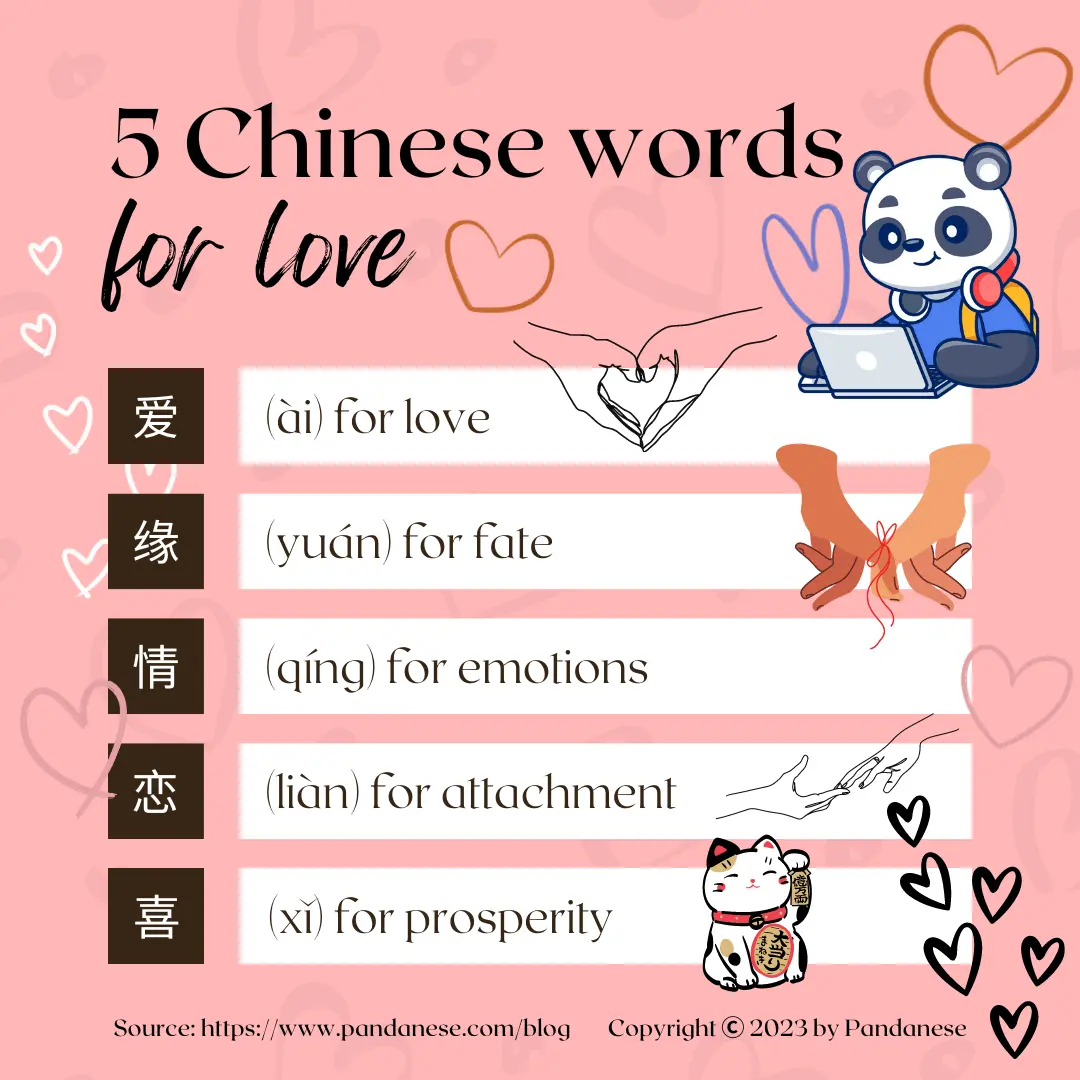
5 Chinese words for love graphic
There are many characters that means love in Chinese and thus many ways to express your love. If you want to know how to express your love with nicknames in Chinese, we got the article for you: 50+ Chinese Nicknames For Any Relationships & Meanings.
1. 爱 (ài) for love
Let's start with one of the most widely used Chinese symbols for love: 爱 (ài). 爱 is the simplified Chinese symbol for love and looks similar to the traditional Chinese character 愛. There are many different ways you could use this word, such as "我爱你 (wǒ ài nǐ/I love you)" or "恋爱 (liàn ài/fall in love)."
This symbol has been used in traditional Chinese culture for centuries and is often used in literature to symbolize platonic love between people, not just in romantic relationships
Breaking down 爱 | trainchineseIt is also a common Chinese character that people use for their tattoo.
2. 缘 (yuán) for fate
Another symbol for love in China is the character 缘 (yuán). This character is a combination of 线 (xiàn) and 元 (yuán). Together, they represent the ties that bind people—a connection between two people in love and the bond that holds them together.
Learn these Chinese symbols for love and more with Pandanese. Pandanese is a Chinese character flashcard that incorporates mnemonics and Spaced Repetition System (SRS) to be an effective Chinese flashcard software for you.
With Pandanese, memorizing Chinese characters has never been easier.
3. 情 (qíng) for emotions
The Chinese character 情 (qíng) is the symbol that represents the complex and nuanced emotions associated with love and relationships. It's composed of two parts, the first being "heart" and the second being "feelings," which together convey the idea that love is a deep and intense emotion that comes from the heart.
When this hanzi is used in literature, poetry, and other expressive forms, it is to convey the different themes of love such as passion, longing, and heartache. A reminder that love is not always easy, but worth it for the complex emotions it brings.
Thus 情 is also associated with the romantic and emotional side of love, making it a perfect symbol for all things lovey-dovey and heartwarming in Chinese culture.
This Chinese love symbol is believed to represent the emotions and feelings associated with love and romantic relationships.
4. 恋 (liàn) for attachment
This hanzi character 恋 is the symbol of love and romance in traditional Chinese culture. 恋 combines the character of 心 (“heart”) and 亦 ("affinity"), and it is used to represent feelings of strong affection or devotion.
恋 is most often used to express the idea of deep and passionate romance. It is also commonly believed that this symbol represents the attachment and connection feeling in a strong romantic relationship
Breaking down 恋 | trainchinese5. 喜 (xǐ) for prosperity
If you have attended or seen any Chinese weddings, you have likely come across the word 喜 or 囍, a duplication of the Chinese character 喜, but has the same pronunciation. Both are commonly seen as decorative items in Chinese restaurants worldwide.
This hanzi is used in weddings and other celebrations to express the joy and love shared between two people. Additionally, it has multiple connotations such as happiness, joyfulness, delightfulness, and joy.
While 囍 means double happiness for the couple and is typically used in traditional Chinese ornament design, it is also said to be created during the emperor's chancellor's marriage during the Song Dynasty.
What are the other Chinese symbols for love?
1. Mystic knot
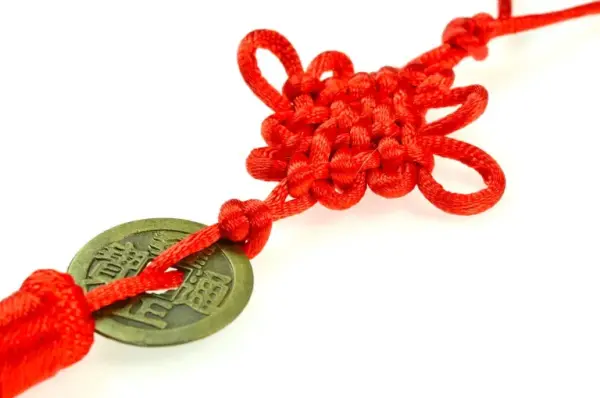
The Chinese mystic knot, The Spruce
The Chinese mystic knots are intrinsically tied to Chinese culture. It has various other names than the mystic knot, such as the endless knot, the eternal knot, or the Chinese knot. This knot is created by intertwining two red strings, symbolizing eternal love and peace. It is most commonly used as amulets, jewelry, or decoration pieces around the house.
In the olden days, these mystic knots were tied using red silk ribbons on newlyweds' wedding days to symbolize stability and tranquility in the marriage–truly a Chinese symbol of love.
Traditional feng shui also believed that the mystic knots ensure harmony between couples, and it is recommended to have this good luck charm somewhere in the bedroom. There are also other love symbols in feng shui, such as the dragon and the phoenix (used to represent the emperor and empress, respectively), as well as doves and mandarin ducks.
2. Jade Pendants
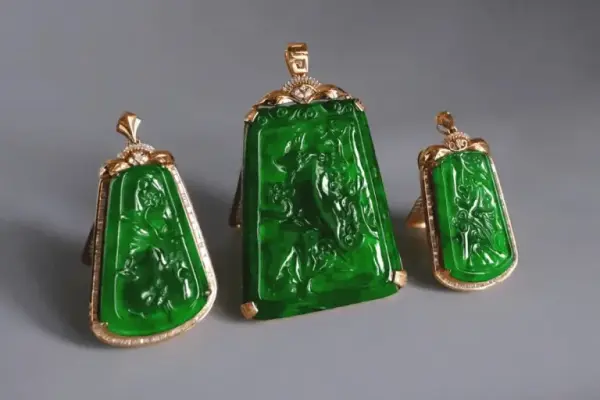
Jade pendant image, Gem Gardener
“The beauty of jade is like the virtue of a gentleman.”
Jade was a symbol of being a gentleman in ancient China. Someone who exemplified traits of being a gentleman gained attention, respect, and peace, as well as being known as gentle and distant to love.
Therefore, the elegance and calmness of the gentlemen of ancient China liked to use jade as a symbol of love, thus appearing restrained and polite, neither eager nor alienated.
3. Love Pea
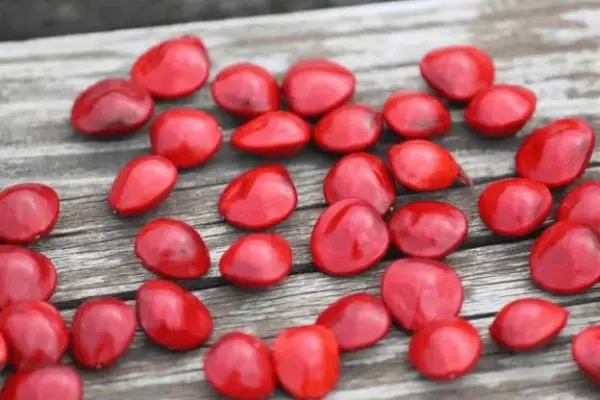
Bright Red Peas, Yan.sg
Have you seen the love pea? It's called 相思豆 (xiāng sī dòu, which translates to "lovesick peas") in Mandarin Chinese. Its color is bright red, and this particular red bean is shaped similarly to the heart.
According to Chinese legend, a woman's husband was recruited to join the country's army. However, she was heartbroken when he lost his life in the battle. Devastated, she cried on a tree on a nearby mountain. After decades, her tears turned red, just like the beans on the tree.
This story is also said to have inspired a poet in the Tang Dynasty, Wang Wei. Here's how the poem goes:
When those red berries come in springtime
Flushing on your southland branches
Take an armful, for my sake
As a symbol of our love
Over time, people started calling these red peas the "Love Peas," representing love in Chinese culture. Nowadays, it is common to use these love peas in jewelry, such as necklaces or bracelets. These are typically used as gifts to a significant other to say, "I miss you."
Frequently asked questions
What is the Chinese character for romantic love?
The simplified Chinese character for romantic love is 爱, while the traditional Chinese character for love is 愛.
What is the Chinese symbol for love?
The most famous Chinese symbol for love is 爱 (ài). It is often used for both platonic and romantic forms of love, though most people tend to associate 爱 with romance. There are other hanzi that has the nuances of love such as "缘" (yuán), "情" (qíng), "恋" (liàn), and "喜" (xǐ).
In closing
Chinese culture has many symbols for love, whether through a Chinese character or an item. These symbols can range from the Love Pea representing eternal love and devotion to using a single word like 缘 to symbolize fate.
These Chinese love symbols demonstrate the significance of love in Chinese culture and the importance placed on expressing and preserving love in relationships. They represent purity and beauty and are celebrations of love.
Jing You is a Chinese native who grew up in the Fujian province and soaked in the Chinese culture while living with her grandparents. She later moved to Singapore to pursue further education. However, she has always been passionate about the Mandarin language despite being in an environment that speaks English predominantly. She was involved in multiple Mandarin and Chinese culture programmes in schools, and brought this passion forward by tutoring elementary school students Mandarin in her adulthood.
The easiest way to learn Chinese & build vocabulary

